Revell's 1/72 scale
Junkers Ju 290 A-7
by Roland Sachsenhofer

The sight of an original Ju 290 must have been extremely impressive. The sheer dimensions of this large aircraft were awe-inspiring: at an extraordinary 42 metres from wingtip to wingtip and a length of around 29 metres, the Ju 290 was one of the largest flying giants of its time. The corresponding dimensions of an Avro Lancaster can well illustrate what this claim meant in reality: its wingspan and overall length of 31 and 21 metres respectively are a full ten metres less - and a Lancaster is by no means a dwarf!
Impressive are also the performance data in which the Ju-290 moved through its element: up to eight tons of payload could be moved at a speed of 388 km/h over 2500 kilometres, unloaded the top speed increased to 420 km/h and a range of an astonishing 6000 kilometres. The service ceiling remained below 7000 metres, so the Ju-290 did not need a pressurised cabin. The giant was powered by four BMW 801A twin star engines, each producing 1560 hp.
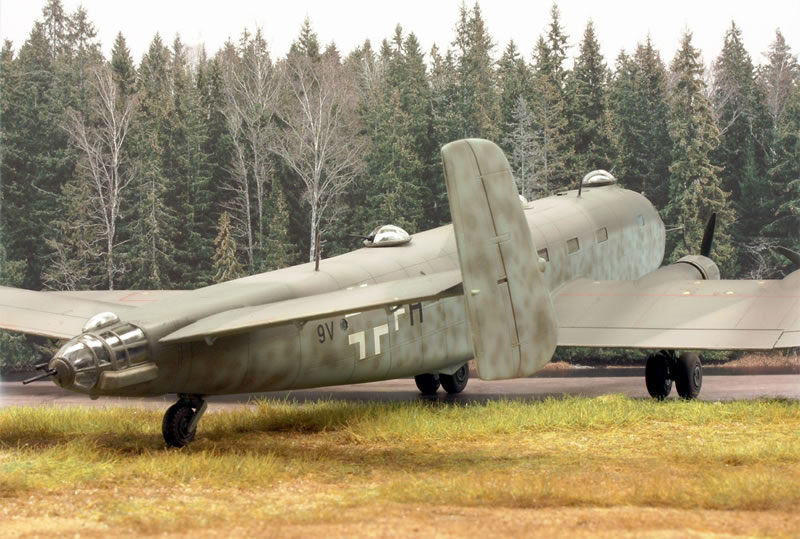
The Ju-290 not only radiated modernity in its external design, but also had the finest and latest technical equipment installed in its interior. Remarkable was, for example, the innovative "Trapo KLappe", a large-sized loading flap that could also be opened in flight, allowing even the bulkiest goods to be winched into the fuselage. This also reflects the original purpose of the Ju-290 in Luftwaffe service: the aircraft had been developed from the Ju-90 in 1942 in order to provide the Luftwaffe with an effective and contemporary transporter. The eight aircraft built of the first series version A-1 were accordingly also designed as transporters.
Ju 290s of this early series flew their first missions with KG 200 from January 1943 to supply the Stalingrad cauldron. The catastrophic circumstances led to disastrous losses. For example, forty-five of the 79 people on board died in the crash of the Ju 290 V1 alone, which was overcrowded with wounded: since the plane had to take off under enemy fire, the stretchers for the wounded to be flown out were not properly lashed down; during the violent flight manoeuvres necessary in the combat zone, the stretchers slipped backwards in the cargo hold, making the Ju 290 tail-heavy beyond repair. As a result, the aircraft, which was no longer controllable, stalled.
The last three aircraft of the A-1 series had already been converted into reconnaissance aircraft at the factory. In this role, the excellent range of the Junkers giant paid off. All further of the 51 Ju-290s produced until the end of production in 1944 were designed as reconnaissance aircraft.
The Ju-290 A-7 shown here with my model shows an innovation that had been installed for the first time in the 5 Long-Range Reconnaissance Group stationed in France: the FuG 200 Hohentwiel ship search radar made the Ju-290 an effective long-range maritime reconnaissance aircraft. This radio detection system had been designed to detect sea targets. Characteristic of this system is the set-up in the form of three "antenna trees": two mounted laterally on the left and right served to receive the returning signals, while the third, centrally mounted antenna mast functioned as a transmitter. Jagged deflections on the indicator pointed either to the left or to the right, informing the radio operator of the direction of the target. This method worked up to a range of about 150 kilometres.
My depiction shows one of these machines from the 5th FAGr. long-range reconnaissance group stationed in Mont-de-Marsan, south-west France.
The two model kits of the Ju-290, which I used for my overall Ju-290 project, had been in my building stock for several years now. The final impetus to build them was the idea that a Ju-290 in flight, i.e. with the landing gear retracted and the propellers spinning, should actually look pretty good!
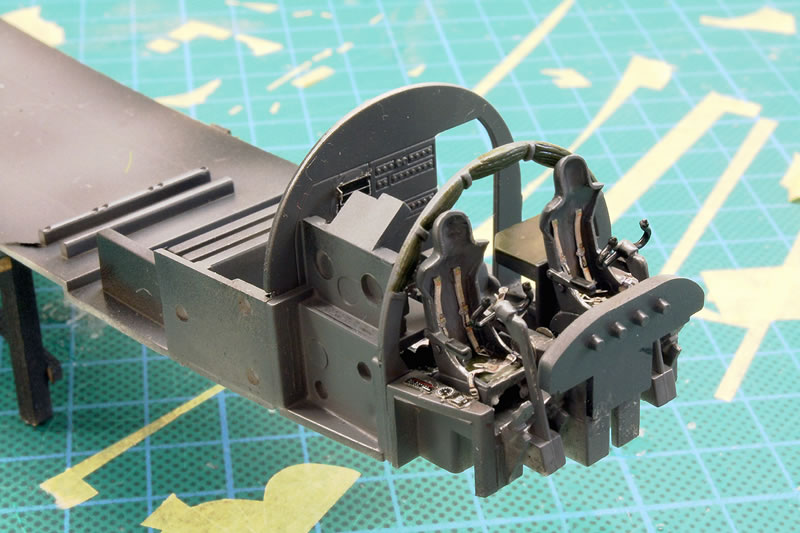
While I was at it, I could build both examples in parallel. The attraction of this: what you learn in one building step you can apply to the second model straight away!
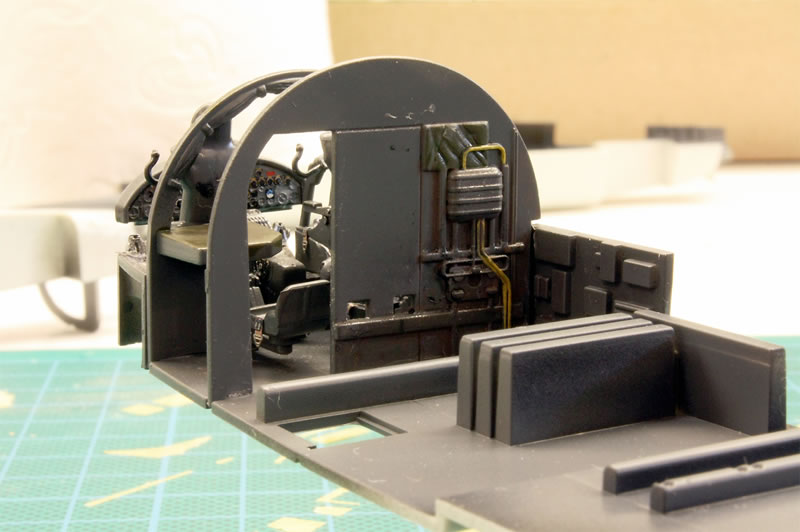
The first Ju-290 shown here has the imposing volumes of this large bird standing on the landing gear in the traditional form of representation, the second, "flying" Ju-290 will follow soon.
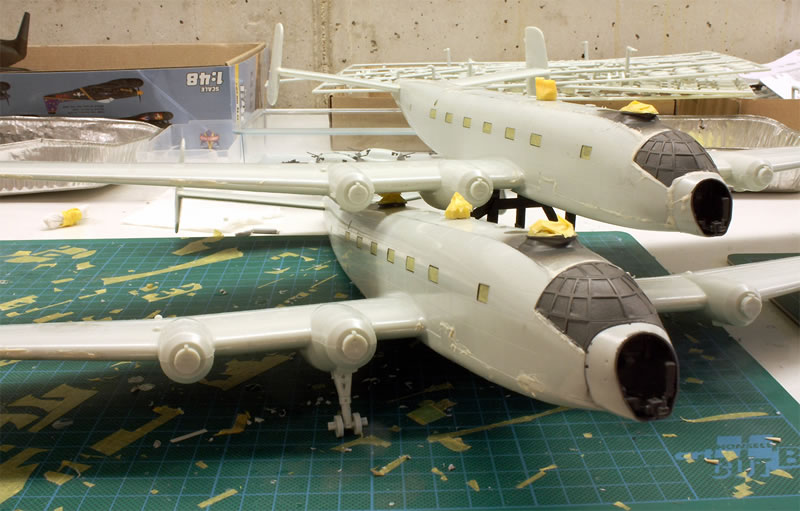
Revell's moulds are an in-house production from 2003; my A-7 shown here was realised with one of the new editions released in 2009. This was built "out of the box", with the Eduard seat belts being the exception that proves the rule. However, there is one ingredient which I would like to warmly recommend to all those interested: the antennas of the three "trees" on the nose were made from the Eduard etched parts set. This pays off, in my opinion the finished appearance is much closer to the original than the rather massive plastic parts from the kit would have allowed.
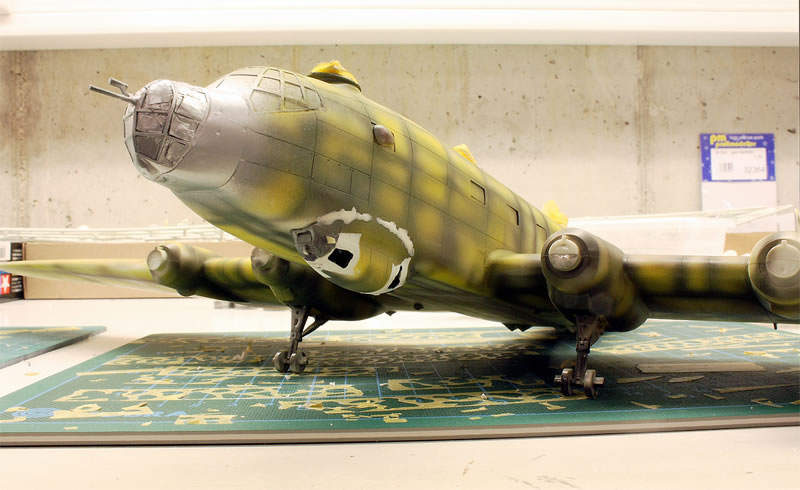
The rest of the comments on the parts and the resulting building pleasure can also only be formulated as praise. The accuracy of fit ranges from pleasant to impressive. The high complexity of the construction - the fuselage, for example, is not built from two half-shells as usual, but from several large and some small components - is justified and makes sense.
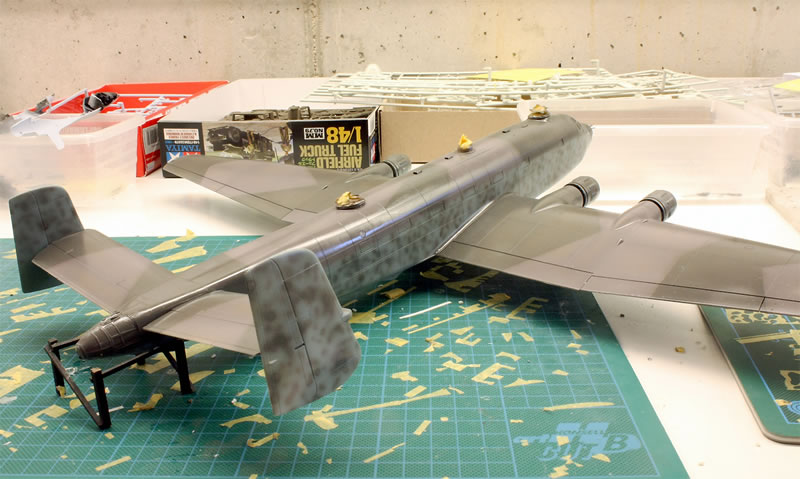
I found it particularly pleasant that the layout of the parts ensures the strength and stability of the construction, which is especially important for such a large model. Last but not least: the decals are of excellent quality, by the way, they allow the construction of three machines, two of which are pleasantly different in their appearance.
At the end of a rather time-consuming building process, I am quite happy to have tamed this monster, although, as the previous text makes clear, it is not difficult with all the kit qualities. I can therefore recommend this model-building experience without reservation to anyone who is interested!
If you are interested in the building process, please have a look here on Scalemates:
https://www.scalemates.com/profiles/mate.php?id=10148&p=albums&album=88112
As ever, remarks will be appreciated:
ro.sachsenhofer@gmx.at
Model, Images and Text Copyright ©
2023 by Roland Sachsenhofer
Page Created 16 January, 2023
Last Updated
16 January, 2023
Back to HyperScale Main Page

|
Home
| What's New | Features | Gallery | Reviews | Reference | Resource Guides | Forum |